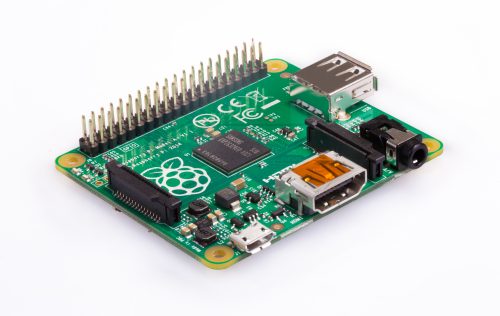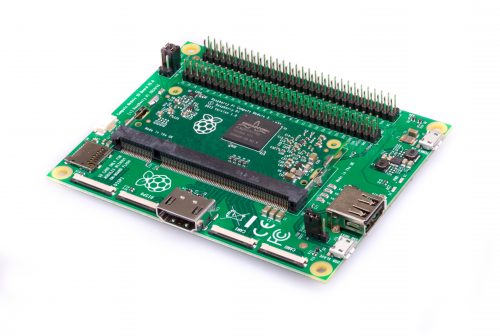Before Easter, we asked you to tell us your questions for a live Q & A with Raspberry Pi Trading CEO and Raspberry Pi creator Eben Upton. The variety of questions and comments you sent was wonderful, and while we couldn’t get to them all, we picked a handful of the most common to grill him on.
You can watch the video below — though due to this being the first pancake of our live Q&A videos, the sound is a bit iffy — or read Eben’s answers to the first five questions today. We’ll follow up with the rest in the next few weeks!
Live Q&A with Eben Upton, creator of the Raspberry Pi
Get your questions to us now using #AskRaspberryPi on Twitter
Any plans for 64-bit Raspbian?
Raspbian is effectively 32-bit Debian built for the ARMv6 instruction-set architecture supported by the ARM11 processor in the first-generation Raspberry Pi. So maybe the question should be: “Would we release a version of our operating environment that was built on top of 64-bit ARM Debian?”

And the answer is: “Not yet.”
When we released the Raspberry Pi 3 Model B+, we released an operating system image on the same day; the wonderful thing about that image is that it runs on every Raspberry Pi ever made. It even runs on the alpha boards from way back in 2011.
That deep backwards compatibility is really important for us, in large part because we don’t want to orphan our customers. If someone spent $35 on an older-model Raspberry Pi five or six years ago, they still spent $35, so it would be wrong for us to throw them under the bus.
So, if we were going to do a 64-bit version, we’d want to keep doing the 32-bit version, and then that would mean our efforts would be split across the two versions; and remember, we’re still a very small engineering team. Never say never, but it would be a big step for us.
For people wanting a 64-bit operating system, there are plenty of good third-party images out there, including SUSE Linux Enterprise Server.
Given that the 3B+ includes 5GHz wireless and Power over Ethernet (PoE) support, why would manufacturers continue to use the Compute Module?
It’s a form-factor thing.
Very large numbers of people are using the bigger product in an industrial context, and it’s well engineered for that: it has module certification, wireless on board, and now PoE support. But there are use cases that can’t accommodate this form factor. For example, NEC displays: we’ve had this great relationship with NEC for a couple of years now where a lot of their displays have a socket in the back that you can put a Compute Module into. That wouldn’t work with the 3B+ form factor.
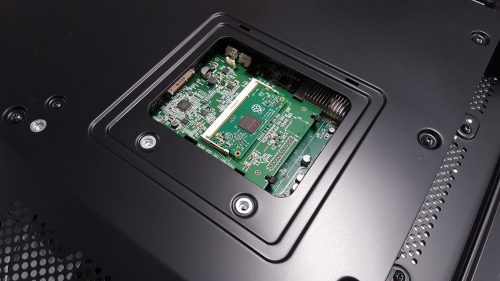
An NEC display with a Raspberry Pi Compute Module
What are some industrial uses/products Raspberry is used with?
The NEC displays are a good example of the broader trend of using Raspberry Pi in digital signage.
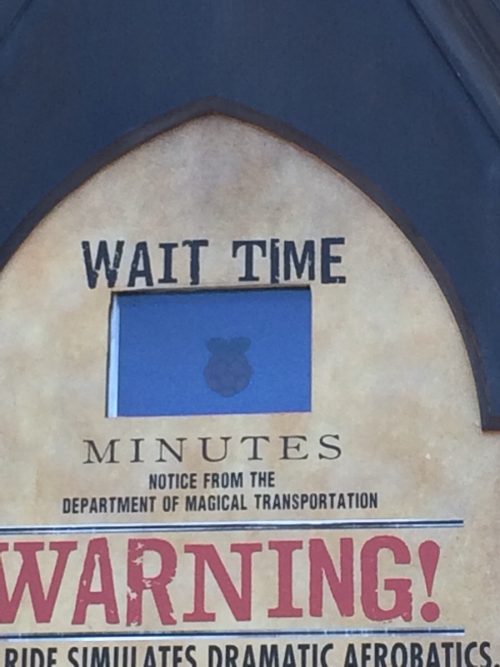
A Raspberry Pi running the wait time signage at The Wizarding World of Harry Potter, Universal Studios.
Image c/o thelonelyredditor1
If you see a monitor at a station, or an airport, or a recording studio, and you look behind it, it’s amazing how often you’ll find a Raspberry Pi sitting there. The original Raspberry Pi was particularly strong for multimedia use cases, so we saw uptake in signage very early on.
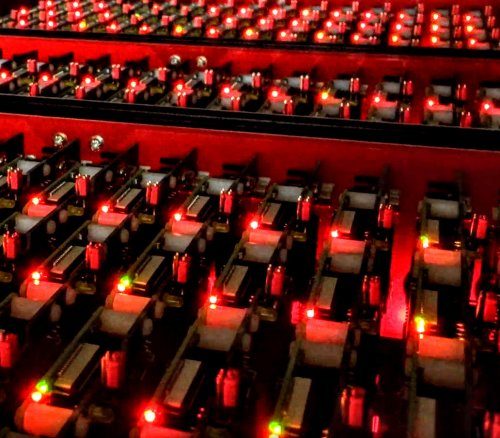
Los Alamos Raspberry Pi supercomputer
Another great example is the Los Alamos National Laboratory building supercomputers out of Raspberry Pis. Many high-end supercomputers now are built using white-box hardware — just regular PCs connected together using some networking fabric — and a collection of Raspberry Pi units can serve as a scale model of that. The Raspberry Pi has less processing power, less memory, and less networking bandwidth than the PC, but it has a balanced amount of each. So if you don’t want to let your apprentice supercomputer engineers loose on your expensive supercomputer, a cluster of Raspberry Pis is a good alternative.
Why is there no power button on the Raspberry Pi?
“Once you start, where do you stop?” is a question we ask ourselves a lot.
There are a whole bunch of useful things that we haven’t included in the Raspberry Pi by default. We don’t have a power button, we don’t have a real-time clock, and we don’t have an analogue-to-digital converter — those are probably the three most common requests. And the issue with them is that they each cost a bit of money, they’re each only useful to a minority of users, and even that minority often can’t agree on exactly what they want. Some people would like a power button that is literally a physical analogue switch between the 5V input and the rest of the board, while others would like something a bit more like a PC power button, which is partway between a physical switch and a ‘shutdown’ button. There’s no consensus about what sort of power button we should add.
So the answer is: accessories. By leaving a feature off the board, we’re not taxing the majority of people who don’t want the feature. And of course, we create an opportunity for other companies in the ecosystem to create and sell accessories to those people who do want them.
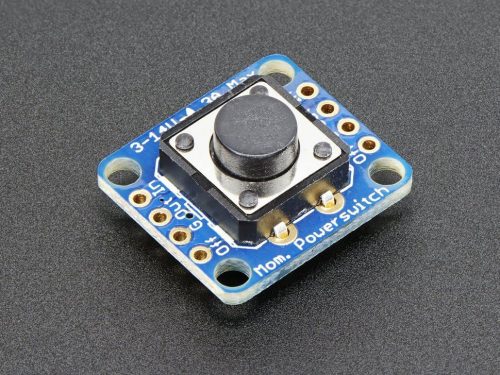
The Adafruit Push-button Power Switch Breakout is one of many accessories that fill in the gaps for makers.
We have this neat way of figuring out what features to include by default: we divide through the fraction of people who want it. If you have a 20 cent component that’s going to be used by a fifth of people, we treat that as if it’s a $1 component. And it has to fight its way against the $1 components that will be used by almost everybody.
Do you think that Raspberry Pi is the future of the Internet of Things?
Absolutely, Raspberry Pi is the future of the Internet of Things!
In practice, most of the viable early IoT use cases are in the commercial and industrial spaces rather than the consumer space. Maybe in ten years’ time, IoT will be about putting 10-cent chips into light switches, but right now there’s so much money to be saved by putting automation into factories that you don’t need 10-cent components to address the market. Last year, roughly 2 million $35 Raspberry Pi units went into commercial and industrial applications, and many of those are what you’d call IoT applications.
So I think we’re the future of a particular slice of IoT. And we have ten years to get our price point down to 10 cents 🙂
Website: LINK

